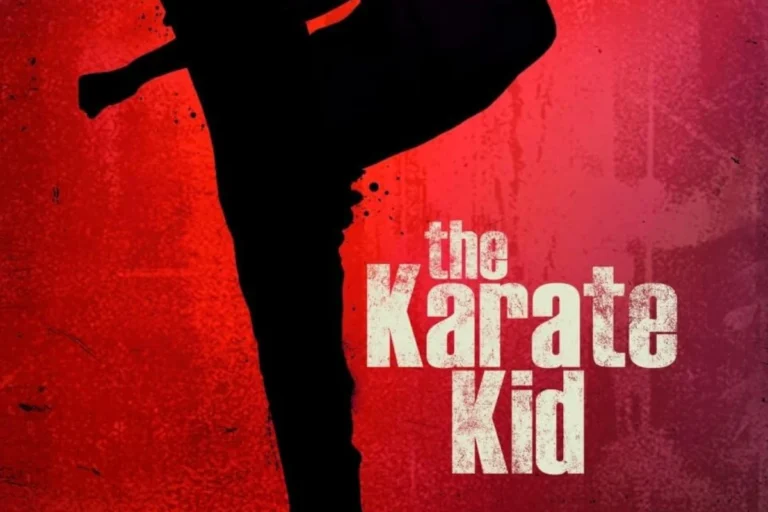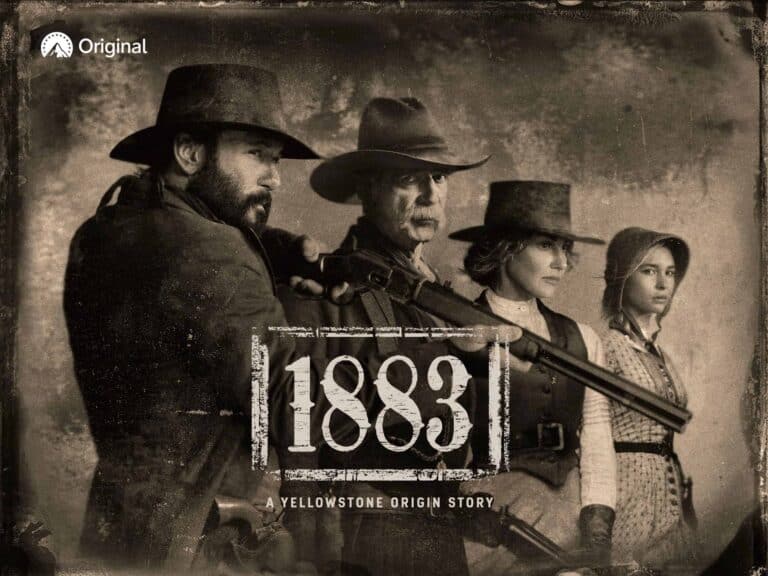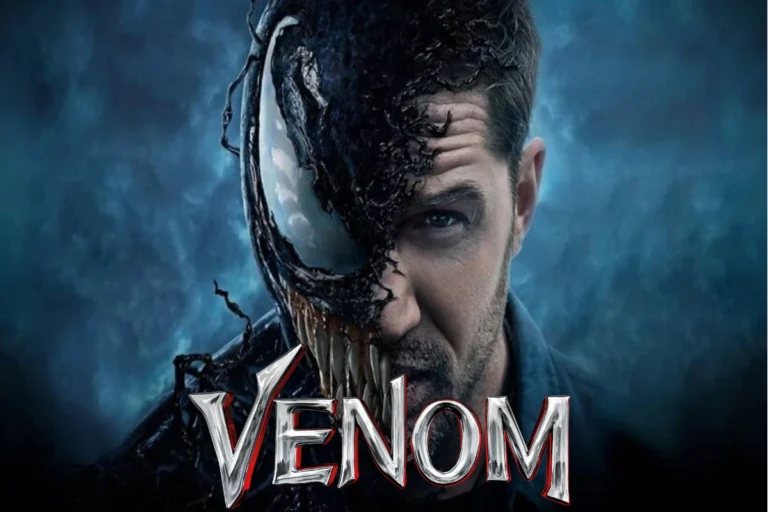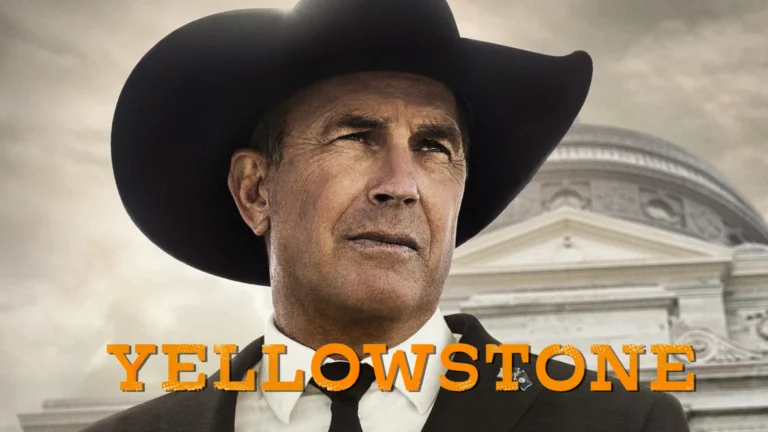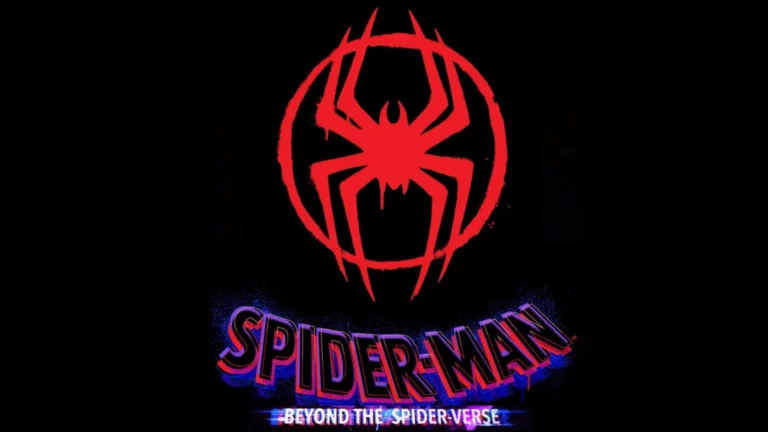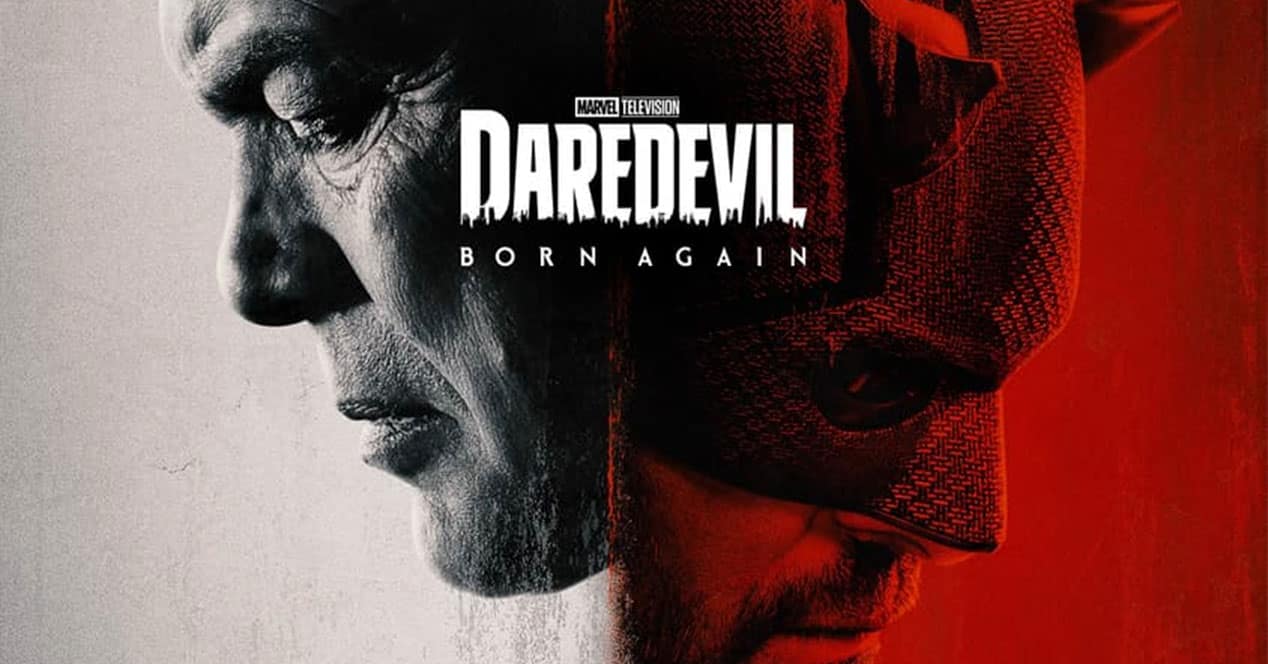
The Devil of Hell’s Kitchen is gearing up for another fight—Daredevil: Born Again Season 2 is officially in production and scheduled to hit Disney+ in March 2026. After a significant creative overhaul and a new direction more in line with the fan-favorite Netflix series, the show is bringing back familiar faces, introducing new ones, and diving deep into a darker, more politically charged narrative.
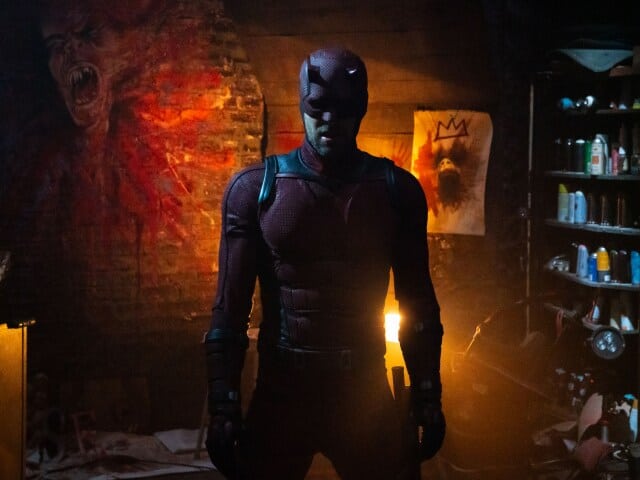
Returning Cast & New Additions
Charlie Cox reprises his iconic role as Matt Murdock/Daredevil, stepping back into the spotlight after his appearances in Spider-Man: No Way Home and Echo. Longtime fans will be pleased to see the return of Vincent D’Onofrio as the menacing Wilson Fisk/Kingpin, whose political ambitions have reached new heights, and Deborah Ann Woll (Karen Page) and Elden Henson (Foggy Nelson)—absent from earlier plans—are now officially back, correcting a major misstep from Season 1’s initial vision.
Also returning is Wilson Bethel as Bullseye, setting up a highly anticipated showdown. New cast members include Matthew Lillard and Lili Taylor in mysterious roles that insiders say could tie into the larger MCU.
New Suit, Classic Symbolism
Set photos reveal a fresh new look for Daredevil—his black suit is back, this time emblazoned with the classic red “DD” emblem across the chest. This marks a visual and thematic return to the roots of the character, evoking his comic book legacy and the tone of the original Netflix series. The new costume has stirred excitement among fans hoping for a more serious, gritty portrayal of the vigilante.
Storyline & Themes: Rise of the Kingpin
Season 2 reportedly picks up in the aftermath of Wilson Fisk’s rise to power as the mayor of New York City, a twist that turns the city into a near-dystopian state. Martial law has been declared, and vigilantes are now considered enemies of the state. With the legal system compromised, Murdock must rally a team of heroes to resist Fisk’s rule—setting up an ideological and physical war for the soul of the city.
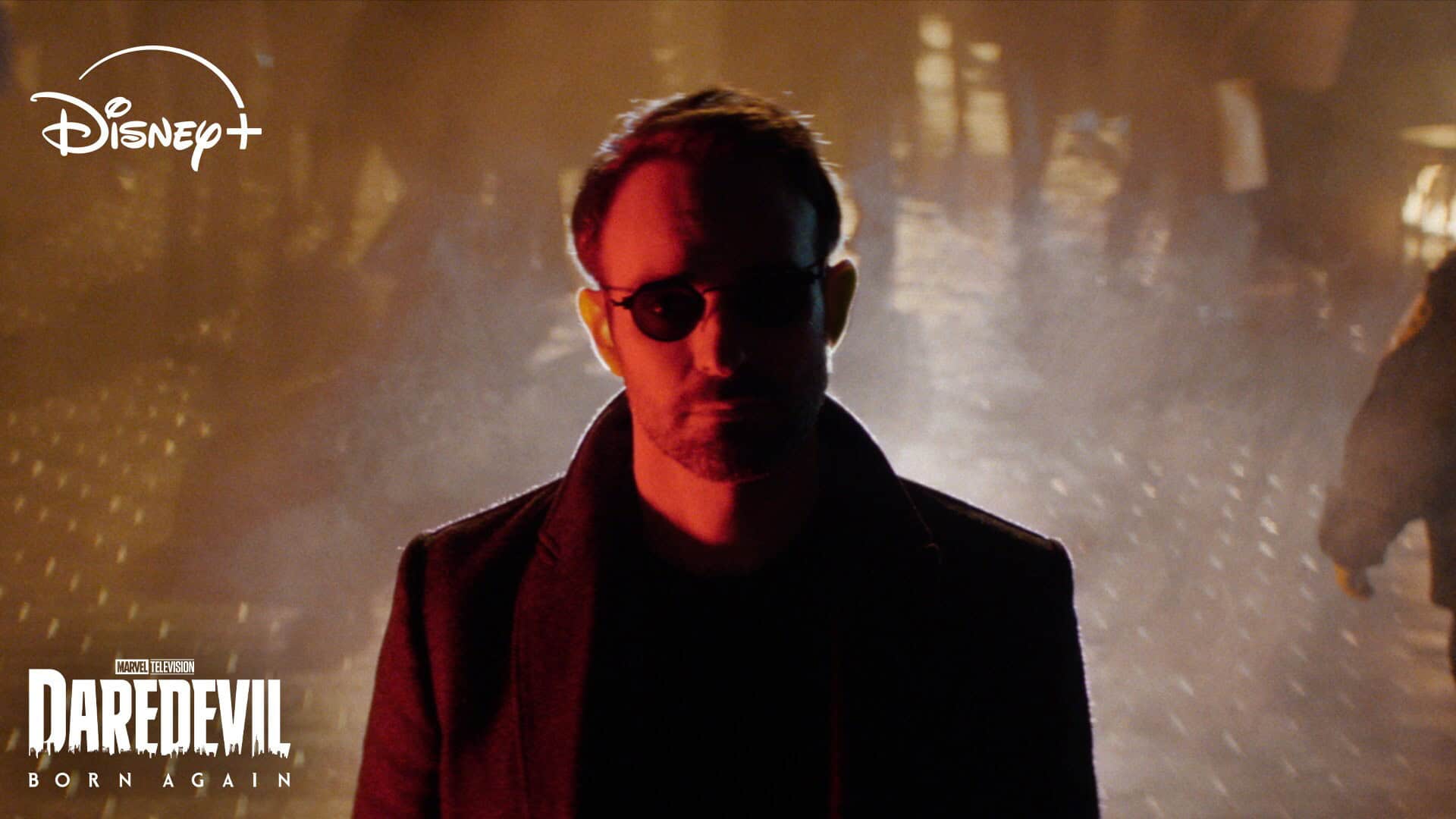
Expect political commentary, moral ambiguity, and courtroom drama blended with brutal street-level action. The tone is said to be darker and more serialized than Season 1, with tighter continuity and emotionally grounded stakes.
Jessica Jones Officially Enters the MCU
Krysten Ritter returns as Jessica Jones, and for the first time, she is fully integrated into the Marvel Cinematic Universe proper. On-set photos confirm scenes with her and Daredevil together, suggesting she will play a substantial role in the resistance movement. Her return also opens the door to deeper exploration of trauma, privacy, and redemption—core themes from her original series.
The Defenders Reassemble?
Rumors are heating up about a possible Defenders reunion. Mike Colter (Luke Cage) and Finn Jones (Iron Fist) have both been spotted in New York City near the filming locations, prompting speculation that Season 2 could bring back the full roster of Netflix’s street-level heroes. With Echo and Kingpin already in play, and Jones now confirmed, this could be the beginning of a full-scale Marvel Knights revival under the Disney+ banner.
Flashbacks to the Netflix Era
Charlie Cox has confirmed that Season 2 will include flashbacks to the original Netflix series, including scenes over 10 years old. This creative decision aims to honor the legacy of the earlier show while establishing a canonical bridge to the MCU. It’s a move that acknowledges fans who championed the darker tone and character development that made Daredevil a critical and fan favorite.
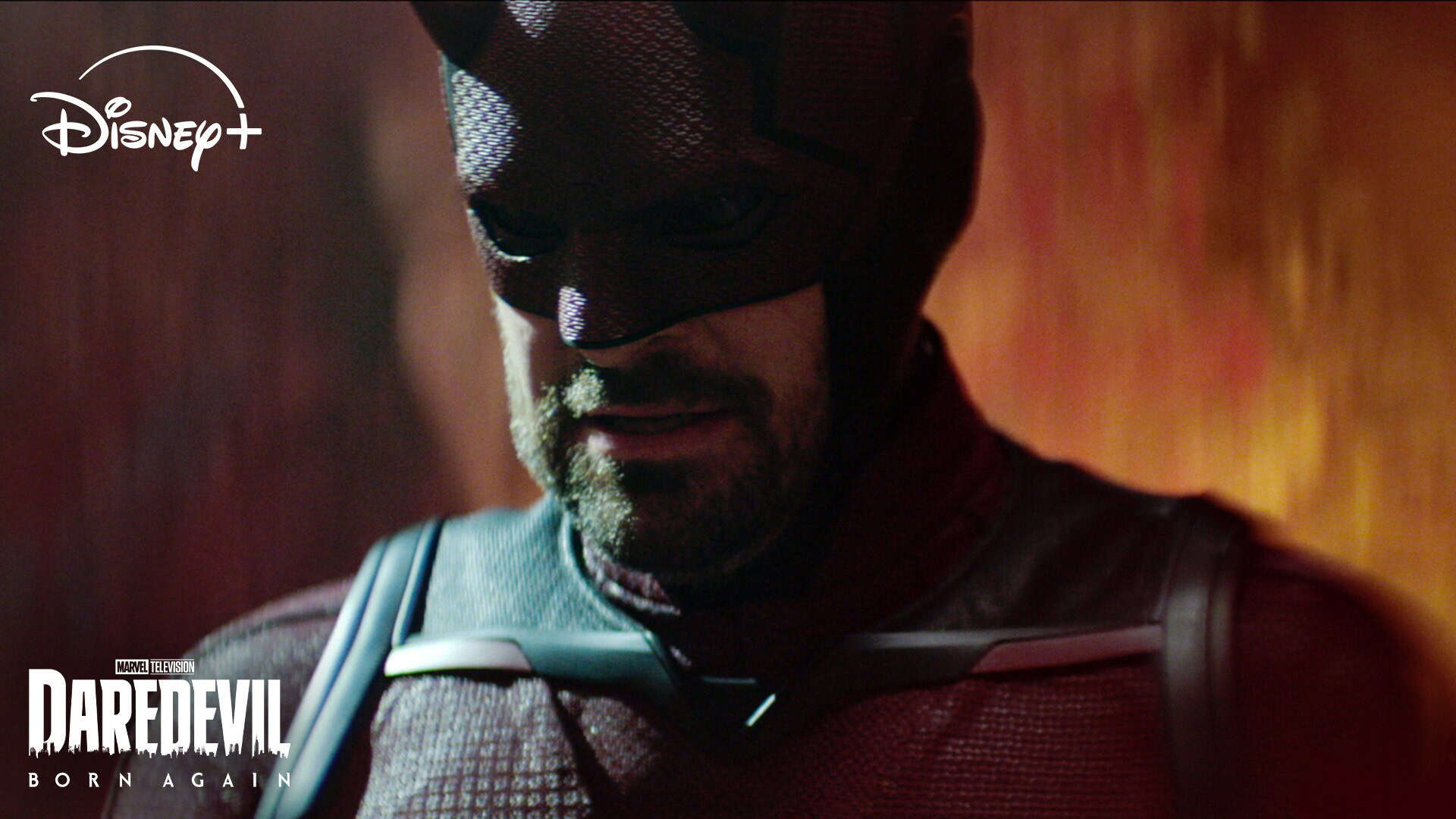
Daredevil: Born Again Season 2 is shaping up to be both a spiritual successor to the Netflix original and a key puzzle piece in the MCU’s evolving street-level narrative. With legacy characters returning, powerful new allies, and the looming threat of Kingpin’s regime, March 2026 can’t come soon enough.
MCU Watch Order
Diving into the Marvel Cinematic Universe can feel overwhelming with so many interconnected films and TV shows. The MCU has grown from a simple superhero movie in 2008 to a massive franchise spanning multiple phases and storylines. You can watch the MCU in either release order starting with Iron Man or chronologically beginning with Captain America: The First Avenger, depending on whether you prefer to experience the story as it was unveiled or in timeline sequence.
Many fans recommend first-time viewers follow the release order since it allows you to discover connections and Easter eggs as they were intended. The journey begins with Phase One (2008-2012) which introduces the original Avengers, continues through Phases Two and Three (2013-2019) completing the Infinity Saga, and extends into the current multiverse-focused era with new heroes and Disney+ exclusive content.
Key Takeaways
- The Marvel Cinematic Universe can be watched in release order or chronological timeline order, with each providing a different viewing experience.
- The complete MCU includes not just movies but also Disney+ TV shows that are now essential to understanding the expanding storylines.
- Post-credit scenes connect films across the Marvel timeline and often introduce important characters or artifacts that become significant later.
Understanding the MCU Order
The Marvel Cinematic Universe offers several ways to experience its vast collection of films and TV shows, each providing a unique perspective on the interconnected stories of heroes like Tony Stark, Steve Rogers, and Thor.
Chronological Order
Watching the MCU in chronological order lets you follow the timeline of events as they occurred within the universe. This journey begins with Captain America: The First Avenger, set during World War II, which introduces Steve Rogers’ transformation into a super soldier.
After the 1940s setting, you’ll jump forward several decades to the events of Captain Marvel in the 1990s. The timeline then progresses to the modern era with Iron Man, where Tony Stark builds his first suit.
The chronological order reveals character development in a different light. You’ll see how Black Widow’s alliances shift over time or how Bruce Banner’s relationship with the Hulk evolves.
This approach can be especially helpful for understanding references and callbacks in later films. Background events mentioned in passing make more sense when you’ve already witnessed them.
2. Chronological Order (In-Universe Timeline):
This order attempts to place events in the order they happen within the MCU’s fictional timeline. This can sometimes involve jumping between films released years apart. It provides a different perspective on the narrative flow, though some argue it can spoil reveals or lessen the impact of certain moments if you’re watching for the first time.
Here’s a common chronological viewing order:
- Captain America: The First Avenger (set in the 1940s)
- Captain Marvel (set in 1995)
- Iron Man (set in 2010)
- Iron Man 2 (set in 2011)
- The Incredible Hulk (set in 2011, overlapping with Iron Man 2 & Thor)
- Thor (set in 2011)
- The Avengers (set in 2012)
- Iron Man 3 (set in late 2012)
- Thor: The Dark World (set in 2013)
- Captain America: The Winter Soldier (set in 2014)
- Guardians of the Galaxy (set in 2014)
- Guardians of the Galaxy Vol. 2 (set a few months after GotG)
- Avengers: Age of Ultron (set in 2015)
- Ant-Man (set in 2015)
- Captain America: Civil War (set in 2016)
- Black Widow (mostly set in 2016, right after Civil War)
- Spider-Man: Homecoming (set a few months after Civil War)
- Doctor Strange (takes place over several months, ending in 2016-2017)
- Black Panther (set in 2017)
- Thor: Ragnarok (set in 2017)
- Avengers: Infinity War (set in 2017)
- Ant-Man and the Wasp (mostly set in 2017, leading up to the end of Infinity War)
- Avengers: Endgame (begins in 2017, then jumps to 2022)
- Loki Season 1 (begins immediately after 2012 Loki escapes in Endgame, but then operates outside linear time)
- What If…? Season 1 (multiverse stories, generally viewed outside the main timeline)
- WandaVision (set three weeks after Endgame, in 2023)
- Shang-Chi and the Legend of the Ten Rings (set after Endgame, likely 2024)
- The Falcon and the Winter Soldier (set six months after Endgame, in 2024)
- Spider-Man: Far From Home (set eight months after Endgame, in 2024)
- Eternals (largely flashbacks, but modern events are set after Endgame, likely 2024)
- Doctor Strange in the Multiverse of Madness (set after No Way Home, likely 2024)
- Hawkeye (set at Christmas 2024)
- Moon Knight (specific timeline unknown, but after Endgame)
- She-Hulk: Attorney at Law (specific timeline unknown, but after Endgame)
- Ms. Marvel (specific timeline unknown, but after Endgame)
- Thor: Love and Thunder (specific timeline unknown, but after Endgame)
- Werewolf By Night (specific timeline unknown, but after Endgame)
- Black Panther: Wakanda Forever (set after Endgame)
- The Guardians of the Galaxy Holiday Special (set after Thor: Love and Thunder, before Vol. 3)
- I Am Groot Seasons 1 & 2 (short, can be watched anytime after Guardians of the Galaxy)
- Ant-Man and the Wasp: Quantumania (likely 2025)
- Guardians of the Galaxy Vol. 3 (likely 2026)
- Secret Invasion (after She-Hulk, before The Marvels)
- The Marvels (after Secret Invasion)
- Loki Season 2 (directly after Loki Season 1 finale)
- Echo (after Hawkeye)
Release Date Order
Following the MCU in release order provides the experience as Marvel originally intended. This begins with Iron Man (2008), followed by The Incredible Hulk (2008) and Iron Man 2 (2010).
The release order carefully introduces concepts and characters at a measured pace. You’ll meet the core Avengers individually before they team up in The Avengers (2012).
This approach preserves the surprise of post-credit scenes and avoids potential spoilers that might occur in the chronological order. The technological evolution of the films also feels more natural.
Marvel Studios designed each phase with specific narrative arcs. Phase One establishes the original Avengers team, while later phases expand the universe with new heroes and cosmic elements.
There are two primary ways to watch the Marvel Cinematic Universe (MCU) films and series: release order and chronological order. Each offers a different viewing experience.
Release Order:
This is the order in which the films and shows were originally released in theaters and on Disney+. It’s generally recommended for first-time viewers because it follows the narrative as it unfolded for audiences, including post-credits scenes and reveals as they were intended to be seen.
Here’s a list of the main films and Disney+ series in release order (up to the current point, with upcoming releases noted):
Phase 1: The Infinity Saga
- Iron Man (2008)
- The Incredible Hulk (2008)
- Iron Man 2 (2010)
- Thor (2011)
- Captain America: The First Avenger (2011)
- The Avengers (2012)
Phase 2: The Infinity Saga
- Iron Man 3 (2013)
- Thor: The Dark World (2013)
- Captain America: The Winter Soldier (2014)
- Guardians of the Galaxy (2014)
- Avengers: Age of Ultron (2015)
- Ant-Man (2015)
Phase 3: The Infinity Saga
- Captain America: Civil War (2016)
- Doctor Strange (2016)
- Guardians of the Galaxy Vol. 2 (2017)
- Spider-Man: Homecoming (2017)
- Thor: Ragnarok (2017)
- Black Panther (2018)
- Avengers: Infinity War (2018)
- Ant-Man and the Wasp (2018)
- Captain Marvel (2019)
- Avengers: Endgame (2019)
- Spider-Man: Far From Home (2019)
Phase 4: The Multiverse Saga
- WandaVision (2021) – Disney+ Series
- The Falcon and the Winter Soldier (2021) – Disney+ Series
- Loki Season 1 (2021) – Disney+ Series
- Black Widow (2021)
- What If…? Season 1 (2021) – Disney+ Series (animated, largely standalone)
- Shang-Chi and the Legend of the Ten Rings (2021)
- Eternals (2021)
- Hawkeye (2021) – Disney+ Series
- Spider-Man: No Way Home (2021)
- Moon Knight (2022) – Disney+ Series
- Doctor Strange in the Multiverse of Madness (2022)
- Ms. Marvel (2022) – Disney+ Series
- Thor: Love and Thunder (2022)
- I Am Groot Season 1 (2022) – Disney+ Shorts
- She-Hulk: Attorney at Law (2022) – Disney+ Series
- Werewolf By Night (2022) – Disney+ Special
- Black Panther: Wakanda Forever (2022)
- The Guardians of the Galaxy Holiday Special (2022) – Disney+ Special
Phase 5: The Multiverse Saga
- Ant-Man and the Wasp: Quantumania (2023)
- Guardians of the Galaxy Vol. 3 (2023)
- Secret Invasion (2023) – Disney+ Series
- Loki Season 2 (2023) – Disney+ Series
- The Marvels (2023)
- What If…? Season 2 (2023) – Disney+ Series
- Echo (2024) – Disney+ Series
- Deadpool & Wolverine (2024) – Upcoming
- Agatha All Along (2024) – Disney+ Series – Upcoming
- Captain America: Brave New World (2025) – Upcoming
- Daredevil: Born Again Season 1 (2025) – Disney+ Series – Upcoming
- Thunderbolts* (2025) – Upcoming
Phase 6: The Multiverse Saga
- Fantastic Four (2025) – Upcoming
- Eyes of Wakanda (2025) – Upcoming
- Marvel Zombies (2025) – Upcoming
- Wonder Man (2025) – Upcoming
- Spider-Man 4 (2026) – Upcoming
- Avengers: Doomsday (2026) – Upcoming
- Avengers: Secret Wars (2027) – Upcoming
For a first-time viewer, release order is generally recommended to experience the story as it was originally presented and to appreciate the build-up of the overarching narrative and character introductions. For rewatches or those who prefer a more cohesive historical flow, chronological order can be interesting.
Narrative Themes
The MCU weaves consistent themes throughout its interconnected stories. Personal sacrifice appears repeatedly—from Tony Stark’s evolution from self-centered billionaire to selfless hero, to Thor’s journey of learning humility and responsibility.
Family relationships, both biological and chosen, drive many character arcs. The Avengers themselves form a makeshift family, complete with the typical conflicts and reconciliations.
Power and its responsible use is explored through characters like Bruce Banner, who struggles to control the Hulk’s immense strength. This theme extends to governmental oversight with the Sokovia Accords.
Legacy becomes increasingly important as the MCU progresses. Original heroes mentor newcomers, and the consequences of past decisions echo through multiple films.
You can enhance your viewing by tracking how these themes develop across different films, regardless of which watch order you choose.
The Infinity Saga
The Infinity Saga represents Marvel’s ambitious 23-film narrative spanning from 2008 to 2019, centering around the six Infinity Stones and culminating in the ultimate battle against Thanos. You can watch these films in several different orders, including chronologically or by focusing on each Infinity Stone.
Phase One
Phase One established the foundation of the MCU with six films introducing key heroes. It began with Iron Man (2008), which introduced Tony Stark and hinted at the larger universe with Nick Fury’s appearance teasing the Avengers Initiative.
The phase continued with The Incredible Hulk (2008), Iron Man 2 (2010), Thor (2011), and Captain America: The First Avenger (2011). The First Avenger notably introduced the Tesseract (Space Stone), the first Infinity Stone to appear in the MCU.
Phase One concluded with The Avengers (2012), bringing together Iron Man, Captain America, Thor, Hulk, Black Widow, and Hawkeye to battle Loki and his Chitauri army. This team-up film was revolutionary and showed the potential of an interconnected cinematic universe.
Phase Two
Phase Two expanded the cosmic elements of the MCU across six films. It kicked off with Iron Man 3 (2013), followed by Thor: The Dark World (2013), which introduced the Reality Stone.
Captain America: The Winter Soldier (2014) dramatically changed the MCU’s landscape by dismantling S.H.I.E.L.D. Guardians of the Galaxy (2014) then broadened the universe, introducing the Power Stone and giving glimpses of Thanos.
Avengers: Age of Ultron (2015) reunited the team against a new threat while revealing the Mind Stone. The phase concluded with Ant-Man (2015), introducing size manipulation and quantum concepts that would become crucial in later films.
Phase Three
Phase Three was the culmination of the Infinity Saga, spanning eleven films and concluding the storyline about Thanos and the Infinity Stones. It began with Captain America: Civil War (2016), which fractured the Avengers team.
New heroes emerged with Doctor Strange (2016) introducing the Time Stone and magical elements. Black Panther (2018) expanded the world with Wakanda, which would become a crucial battleground later.
The saga reached its peak with Avengers: Infinity War (2018), where Thanos collected all six Infinity Stones and wiped out half of all life. Avengers: Endgame (2019) concluded the saga with an epic time heist and final battle, wrapping up character arcs that had developed across more than a decade of storytelling.
You can watch the entire Infinity Saga following the Infinity Watch Order, which focuses on each Infinity Stone in the same order Thanos acquires them.
Expanding Beyond The Infinity Saga
After Endgame, the MCU grew dramatically with new characters and storylines that explore the multiverse concept while setting up future sagas. The Disney+ streaming platform became essential to the MCU experience with shows that connect directly to the films.
Phase Four
Phase Four marked a bold new direction after the conclusion of the Infinity Saga. This phase introduced you to fresh heroes like Shang-Chi in Shang-Chi and the Legend of the Ten Rings and the ancient immortals in Eternals.
Spider-Man: No Way Home became a multiverse event by bringing together three generations of Spider-Man actors. The multiverse concept expanded further in Doctor Strange in the Multiverse of Madness, which connected to the Disney+ series WandaVision.
The Disney+ shows became crucial viewing for understanding the complete story:
- WandaVision
- The Falcon and the Winter Soldier
- Loki
- Hawkeye
- Moon Knight
- Ms. Marvel
These shows filled the gaps between movies and developed characters who later appeared in films. You’ll miss important context for the movies if you skip them.
Phase Five and Beyond
Phase Five deepens the multiverse saga with Ant-Man and the Wasp: Quantumania introducing Kang the Conqueror as the next major threat. Guardians of the Galaxy Vol. 3 gave a heartfelt conclusion to the original team’s journey while setting up new cosmic possibilities.
The Marvels united Captain Marvel with Ms. Marvel and Monica Rambeau, building on storylines established in multiple Disney+ shows. The upcoming Captain America: Brave New World will continue Sam Wilson’s journey after he took up the shield in The Falcon and the Winter Soldier.
Phase Five shows on Disney+ include:
- Secret Invasion
- Echo
- Agatha All Along
- Ironheart
For the complete experience, you should watch these MCU films and shows in the recommended order. The MCU now requires more commitment with the increased output, but you can prioritize based on which characters and storylines interest you most.
Integrating TV Shows and Disney+ Exclusives
Disney+ has expanded the MCU with TV shows that connect directly to the movies. These shows add depth to characters and storylines you might already love from the big screen.
Direct Tie-ins
WandaVision kicks off the Disney+ MCU lineup and directly follows Wanda’s story after the events of Avengers: Endgame. This show is crucial to watch before Doctor Strange in the Multiverse of Madness, as it sets up Wanda’s character development.
The Falcon and The Winter Soldier explores Sam Wilson’s journey to becoming the new Captain America. It fills the gap between Endgame and future films featuring Sam as Captain America.
Loki introduces the multiverse concept that becomes central to Phase 4. You’ll want to watch this before movies like Spider-Man: No Way Home and Ant-Man and the Wasp: Quantumania.
Hawkeye introduces Kate Bishop and continues Clint Barton’s story. It connects to Black Widow through the character of Yelena Belova.
Additional Series
What If…? explores alternate realities within the multiverse. While seemingly standalone, some characters from this animated series have appeared in live-action films.
Moon Knight, She-Hulk, and Ms. Marvel introduce new heroes to the MCU. These shows can be watched independently but will connect to future films.
Secret Invasion follows Nick Fury dealing with a Skrull infiltration on Earth. It builds on plot points established in Captain Marvel and Spider-Man: Far From Home.
Echo spins off from Hawkeye and connects to the street-level heroes. Daredevil: Born Again brings back the popular Netflix character into the main MCU continuity. These shows form their own mini-universe within the larger MCU.
Post-Credit Scenes and Their Significance
Post-credit scenes have become a beloved tradition in the Marvel Cinematic Universe. These short clips, appearing after the main credits roll, serve as exciting teasers for future MCU installments.
The tradition started with the iconic Nick Fury appearance in 2008’s Iron Man, where he mentioned the “Avengers Initiative” to Tony Stark. Since then, these scenes have connected the vast Marvel universe in clever ways.
When watching MCU films, you’ll find that some post-credit scenes pay off years later. For example, the tease of Thanos in earlier films finally culminated in Avengers: Endgame, rewarding fans who stayed until the very end of each movie.
Types of Post-Credit Scenes:
- Setup scenes (introducing new characters)
- Teasers for upcoming films
- Comedic moments
- Resolution of minor plot threads
Spider-Man: Homecoming featured two memorable post-credit scenes. One showed the villainous Scorpion, while the second broke the fourth wall with Captain America discussing patience.
Did you know that as of 2025, the MCU has included 83 post-credits scenes across 47 properties? That’s a lot of extra content!
Even villains get spotlight moments. The real Mandarin was teased in a post-credit scene after the fake version appeared in Iron Man 3, setting up future storylines.
You can find compilations of these scenes online if you want to catch up on ones you might have missed. They’re worth watching in chronological order for the full story experience.
Important Characters and Artifacts
The Marvel Cinematic Universe features key characters and objects that drive the storylines across all films and shows. Understanding these elements helps viewers appreciate the interconnected narrative.
Iconic MCU Heroes
The Original Avengers form the backbone of the MCU. Steve Rogers/Captain America begins his journey in Captain America: The First Avenger, serving as the moral compass of the team. His legacy continues through Sam Wilson, who takes up the shield.
Tony Stark/Iron Man represents the technological genius whose character arc spans from weapons manufacturer to earth’s ultimate defender. His evolution is critical to understanding the MCU’s progression.
Thor brings the cosmic element to the MCU, connecting earth-based stories to the wider universe. His weapon Mjolnir becomes a symbol of worthiness throughout the saga.
Other essential heroes include Spider-Man, whose youthful perspective offers a fresh take on heroism, and Black Panther, who introduces the technologically advanced nation of Wakanda to the MCU.
Nick Fury and S.H.I.E.L.D. serve as the connective tissue between many heroes, orchestrating the Avengers Initiative that brings these characters together.
Villains and Antagonists
Thanos stands as the MCU’s most significant threat, with his quest for the Infinity Stones spanning multiple films before culminating in the Infinity Saga’s conclusion. His philosophy and actions challenge the heroes in unprecedented ways.
Loki evolves from a straightforward villain to a complex antihero. His relationship with Thor and his own journey of self-discovery make him one of the most developed characters in the Marvel chronology.
Ultron represents humanity’s technological hubris, created by Tony Stark but quickly becoming an existential threat to mankind.
The Mandarin appears in different forms throughout the MCU, with his true identity being a major plot point in the Iron Man films.
Each villain provides unique challenges that force heroes to grow and adapt, making them essential to the overall MCU narrative.
Significant Objects
The Infinity Stones are perhaps the most crucial artifacts in the MCU. These six powerful gems (Space, Mind, Reality, Power, Time, and Soul) drive much of the overarching plot across multiple films.
The Tesseract (Space Stone) appears in several early MCU films, including Captain America: The First Avenger and The Avengers, establishing the cosmic elements of the universe.
Mjolnir, Thor’s hammer, represents worthiness and power. The enchantment that only allows the worthy to lift it becomes a significant plot point in several films.
Other notable artifacts include Vibranium (from Wakanda), the Eye of Agamotto (housing the Time Stone), and various technological innovations from Stark Industries that shape the MCU’s world.
These objects often connect different films and characters, creating a cohesive universe where seemingly separate stories ultimately intertwine.
Frequently Asked Questions
Marvel fans often have specific questions about how to approach the extensive MCU catalog. The viewing order can significantly impact your understanding and enjoyment of the interconnected storylines.
What is the recommended sequence to watch the Marvel Cinematic Universe (MCU) films?
Many Marvel fans prefer to watch the films in release order, starting with Iron Man (2008) and following the sequence as they premiered in theaters. This approach allows you to experience the MCU as it was originally presented.
The release order preserves the narrative surprises and post-credit scenes as they were intended. It also keeps the evolution of production quality and special effects in a progressive timeline.
Some viewers prefer a modified release order that incorporates the Disney+ shows at appropriate points. These ideal viewing orders often suggest where to place TV series between specific films.
How does the chronological timeline of MCU films differ from the release order?
The chronological order begins with Captain America: The First Avenger (set in the 1940s) rather than Iron Man. This approach organizes films by when events occur within the fictional universe.
Movies like Captain Marvel and Black Widow take place earlier in the timeline than their release dates suggest. For example, most of Black Widow occurs between Civil War and Infinity War events.
The chronological sequence can be more complicated because some films contain flashbacks or scenes from different time periods. Some detailed guides break down the exact timeline placement of specific scenes for the most dedicated viewers.
Which order provides the best experience for a first-time Marvel movie viewer?
For first-time viewers, the release order is generally recommended. This approach introduces characters and concepts as originally intended by Marvel Studios.
The chronological order might create confusion for newcomers since earlier films often reference future developments that won’t make sense without context. The release order builds the universe piece by piece.
If you’re short on time, some fans recommend a condensed essential viewing order that includes only the most crucial films to understand the overarching Infinity Saga storyline.
Is there an extended viewing order that includes all MCU-related content?
Yes, comprehensive viewing orders include movies, Disney+ series, ABC shows (like Agents of S.H.I.E.L.D.), Netflix series (Daredevil, Jessica Jones, etc.), and even One-Shot short films.
These expanded guides can be quite extensive, potentially including over 60 different titles. They often specify whether each piece of content is essential or optional.
Some hardcore fans even incorporate non-MCU Marvel films like the Fox X-Men series or Sony’s Spider-Man movies in specialized viewing orders, though these aren’t officially part of the MCU continuity.
Where are all the MCU films and series available for streaming?
Most MCU content is available on Disney+, which has become the primary streaming home for Marvel Studios productions. This includes all the Disney+ original series like WandaVision and Loki.
Some Sony-produced Spider-Man films may require access to different streaming services due to distribution rights. These agreements change periodically.
Older Marvel TV series like Agents of S.H.I.E.L.D. and the Netflix Defenders shows are now available on Disney+ in most regions, though ratings and availability may vary by country.
Are there any official guides for viewing the MCU in a specific order?
Disney+ offers an official chronological timeline feature that organizes all MCU content by in-universe chronology. This built-in guide is regularly updated with new releases.
Marvel Studios occasionally releases official timeline guides in art books or special features that clarify the exact placement of each story in the MCU timeline.
The Marvel Studios website also occasionally publishes viewing guides, especially leading up to major releases like Avengers films, to help viewers catch up on essential storylines.

